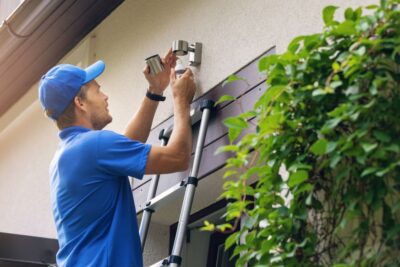Australia’s coastlines offer stunning views, refreshing sea breezes, and an enviable lifestyle. However, living on the coast can pose serious risks to your home’s electrical systems. From salty air to increased humidity and seasonal storms, coastal conditions can accelerate wear and tear on wiring, fittings, and fixtures. Without regular preventive maintenance, these factors can lead to premature failure, safety hazards, or even fires.
Whether you’re managing a high-end holiday rental in the Whitsundays or a year-round residence at Airlie Beach, it’s crucial to take proactive steps to protect your electrical infrastructure. Before seeking an electrician in the Airlie Beach area, there are some things you can do to maintain your home’s electrical system safely and effectively in a coastal environment.
Understand the Coastal Threats
Living by the ocean means your electrical system is constantly under environmental stress. The primary culprits include:
- Salty Air: Salty air can be highly corrosive to metal components such as switchboards, terminals, and conduit fittings.
- Humidity: High humidity can cause moisture inside your home, which can lead to insulation breakdown or mould growth in electrical enclosures.
- Storms and Surges: Coastal homes are more prone to lightning strikes, power outages, and voltage spikes during extreme weather events.
- Sand and Debris: Sand can infiltrate outdoor fixtures and corrode moving parts, particularly in ceiling fans, outdoor lighting, and garden powerpoints.
Identifying these risks early and designing a maintenance strategy around them is the key to extending the life and safety of your electrical system.
Schedule Annual Electrical Inspections
Professional inspections should be your first line of defence. At least once a year, engage a licensed electrician to assess:
- The condition of your switchboard, checking for signs of corrosion or burnt contacts
- The integrity of wiring insulation, especially in older homes
- Performance and reliability of residual current devices (RCDs), which are essential for preventing electric shock
- Weatherproof seals on outdoor powerpoints and lighting
- Surge protection systems, particularly if you’re in a cyclone or storm-prone zone
These inspections don’t just catch problems early; they also ensure your home complies with Australian electrical safety standards.
Use Coastal-Grade Materials
If you’re building or renovating a coastal property, choose components rated specifically for marine or high-humidity environments. These include:
- Stainless steel or UV-stabilised plastic for switches, fittings, and outdoor lighting
- IP-rated weatherproof outlets with tight-sealing covers
- Double-insulated cabling that resists moisture intrusion
- Corrosion-resistant conduit systems to protect cabling from salt spray
In some regions, builders are now specifying materials that meet both electrical standards and higher corrosion resistance benchmarks to futureproof coastal homes.
Keep It Clean and Dry
Salt crystals accumulate over time and can degrade terminals and fittings. Reduce the impact of this through:
- Wiping exposed outdoor fixtures using a damp cloth and mild detergent
- Vacuuming or brushing switchboards (with the power off and cover closed) to remove built-up dust and salt residue
- Ensuring adequate ventilation in roof spaces and around electrical enclosures to minimise trapped humidity
If you have solar panels, include the inverter and cable connections in your cleaning schedule to prevent system inefficiencies or fire hazards.
Protect Against Power Surges
Coastal storms can cause abrupt surges or outages that fry sensitive electronics or damage wiring. To safeguard your home:
- Install a whole-home surge protector at the switchboard
- Use surge-protected powerboards for TVs, computers, and appliances
- Back up essential circuits (like fridge/freezer and lighting) with a battery system or generator, especially in off-grid or rural coastal areas
Don’t Forget Outdoor Spaces
Decks, patios, sheds, and garden areas are often overlooked during maintenance, yet they’re the most vulnerable. Check:
- Outdoor lighting for cracked seals, rusted housings, or flickering.
- Pool equipment for wiring faults or corrosion near the pump or controller.
- Garden powerpoints and extension leads for moisture exposure.
Final Thoughts
Maintaining a coastal home takes a little effort, but is worth the reward. Your electrical system is quietly working 24/7, and when it fails, the results can be dangerous and expensive. Through investing in regular inspections, corrosion-resistant components, and protective measures like surge control, you can enjoy coastal living without compromising on safety or reliability.
If you’re unsure where to start, consult a licensed electrician familiar with coastal environments. They can give you peace of mind when you’re living by the sea.
Feature Image Source: shutterstock_1126937900












